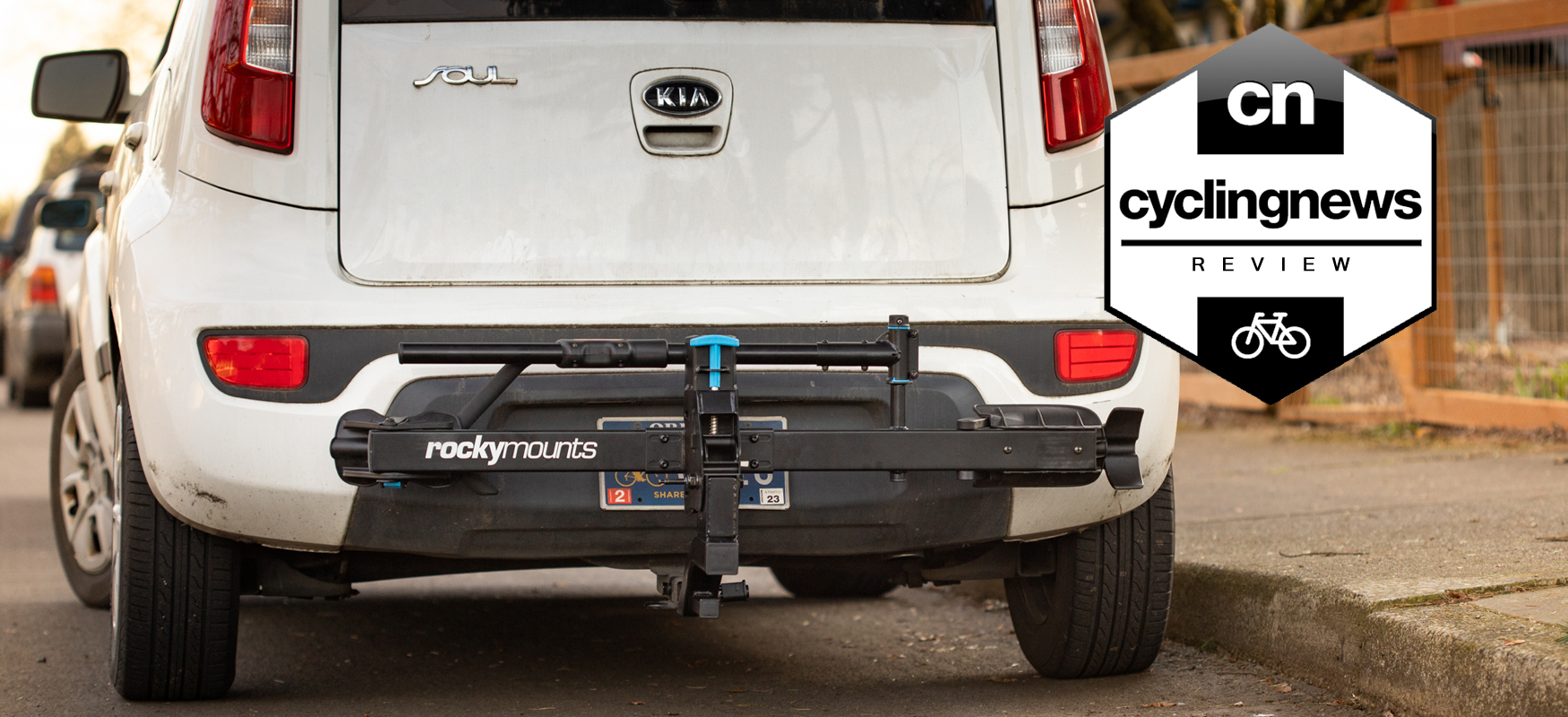Cyclingnews Verdict
Everything about the Rockymounts MonoRail Solo hitch mount bike rack revolves around being lightweight and inexpensive
Pros
- +
Tilts down for hatch access
- +
25lb rack weight makes it easy to add and remove from vehicle
- +
Optional single bike extension is a quick install
- +
Includes strap extenders for larger wheel/tyre bikes
- +
Side to side adjustment to avoid bike contact if used with extension
Cons
- -
Hitch attachment requires tools
- -
Bar coming out of the hitch is lengthy limiting approach angles
- -
Hitch lock is flimsy
- -
Load arm isn't well-padded
- -
No easy way to manage wrenches needed for adjustment
- -
Hard to buy in the UK
You can trust Cyclingnews
Cars and racks allow you to expand the world available for riding, and there are a lot of options. Among those options, one of the easiest is a tow hitch (or tow ball) mounted rack. There are hitches available for most cars and once that's fitted, adding a rack is easy. Plus, there's no need to worry about damaging your bike or car, and you don't have to lift your bike above your head.
To help narrow down some of the best options for racks of all kinds, we've put together a buyer's guide covering the best bike racks for cars. There are plenty of racks on that list but an option that is not yet represented is a hitch-mount rack for a single bike. If you find that you only really need to carry a single bike, the Rockymounts MonoRail Solo bike rack may be worth consideration.
We also spent some time with the MonoRail Add-On single bike extension from Rockymounts to cover an occasional need for a second bike. If you spend most of your time carrying only a single bike, keep reading to see what we think of the Rockymounts rack option.
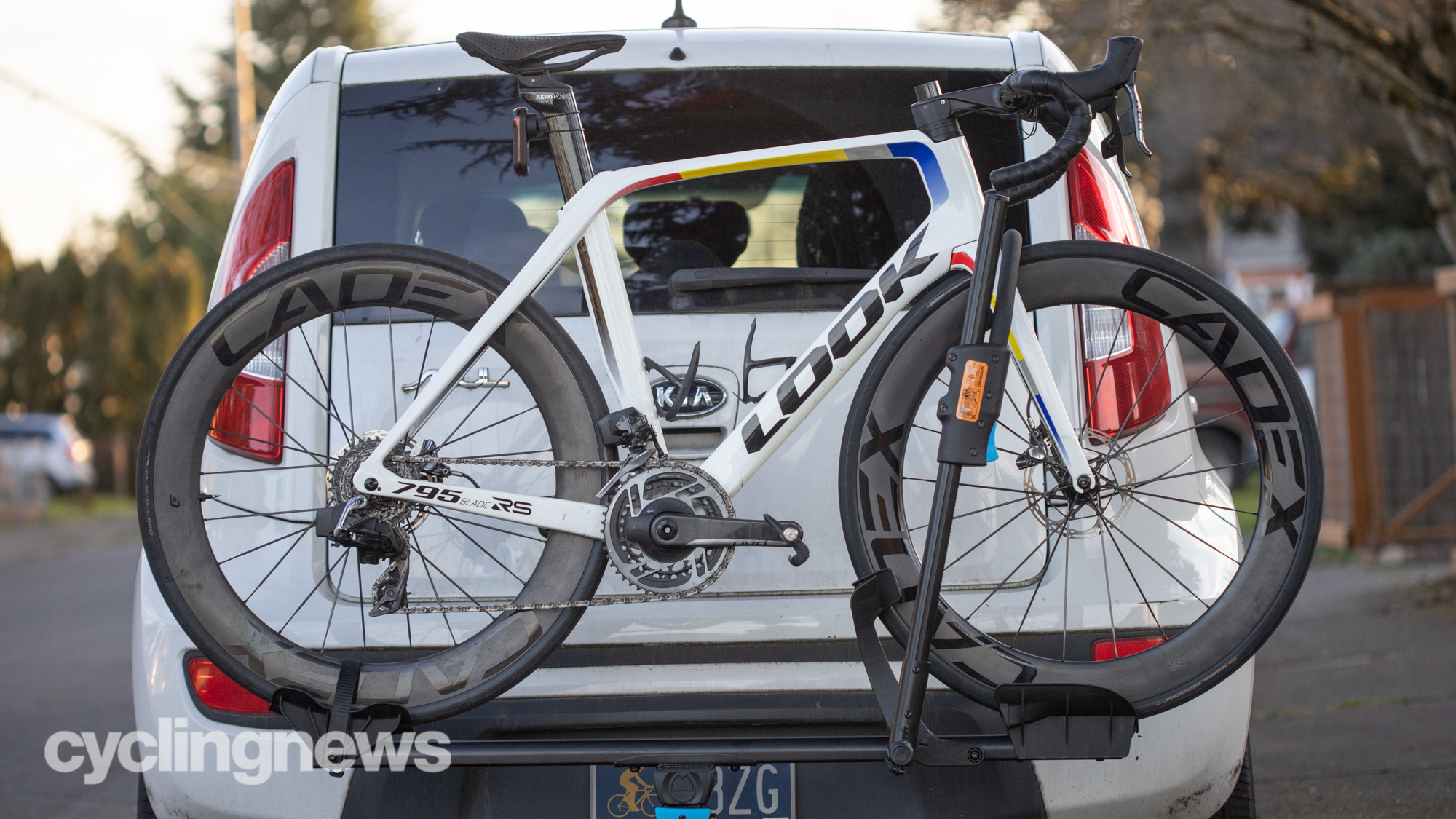
Design and aesthetics
Functionally, the Rockymounts MonoRail Solo is what you get if you take a Rockymounts MonoRail and cut it in half. Price is almost the same, weight is identical, and the only build difference is a small change to the placement of the tilt release. If you are considering the MonoRail two-bike rack, this review will be relevant. It might even sway you to a more modular approach and that's what the MonoRail Solo is all about: modularity.
The module that gives the MonoRail its name is the piece that holds the bike. Sitting under both wheels is a hollow, rectangular beam. It's about 44.5 inches/113 cm long and 2.5 inches/6.35 cm wide. At one end is the front wheel cup and at the other is the rear cup. Max weight per bike is 60 lbs/27 kg and this beam is responsible for supporting all of it.
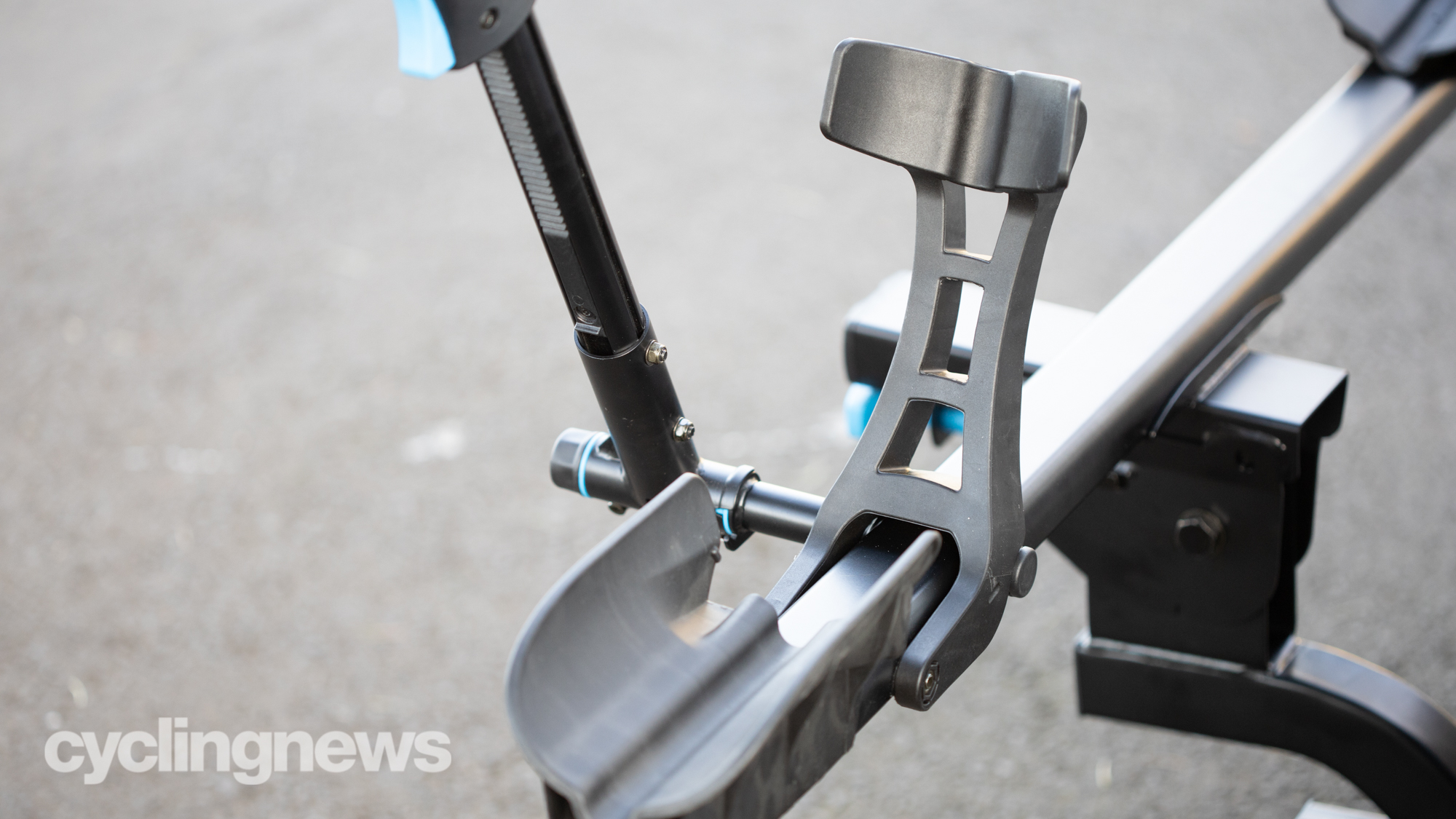
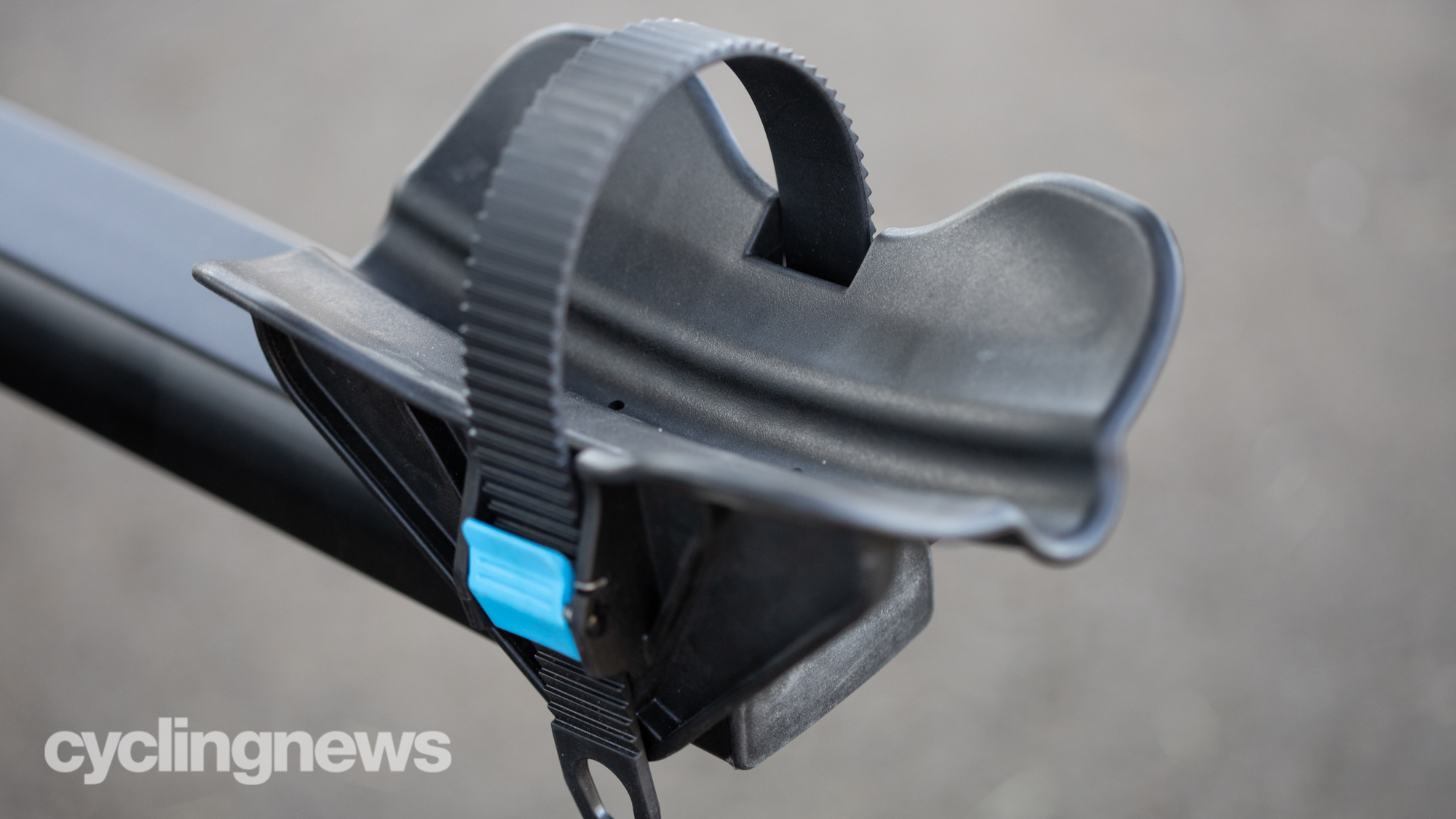
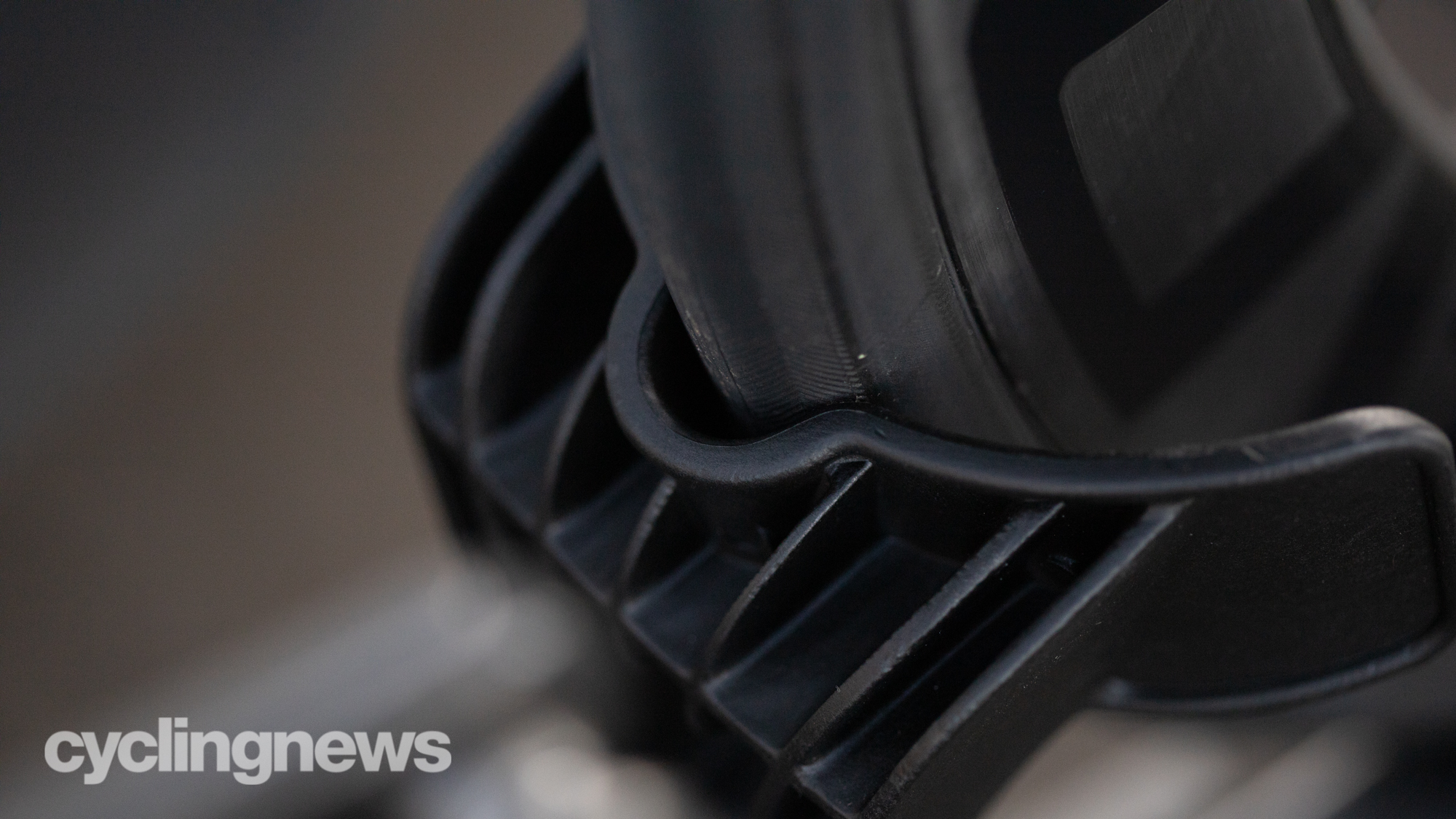
The wheel cups at each end are plastic and they extend a little beyond the rail that supports the weight, to cater to a maximum bike wheelbase of 50 inches/1.27 metres. The front-wheel cup comes attached to the beam but does require the addition of the backstop with a single bolt. When not in use the backstop hinges on that single bolt, folds into the cup and clips so as not to move. At the rear, the wheel cup attaches to the base, along with the rear wheel strap, with a single bolt that requires installation. There is an included wheel strap extension to cover tyres as large as 5-inches.
The other module that makes the MonoRail work is the hitch receiver base. Really, this is two separate pieces. There's the spine and the base, and each is available separately. The base is available in either a 1.25- or 2-inch size to match the appropriate hitch receiver sizes. Unless you are replacing a piece, this comes assembled and includes a release that allows tilting either up or down. The end of the bolt that the tilt hinges on is also where the included cable lock attaches if you choose to use it.
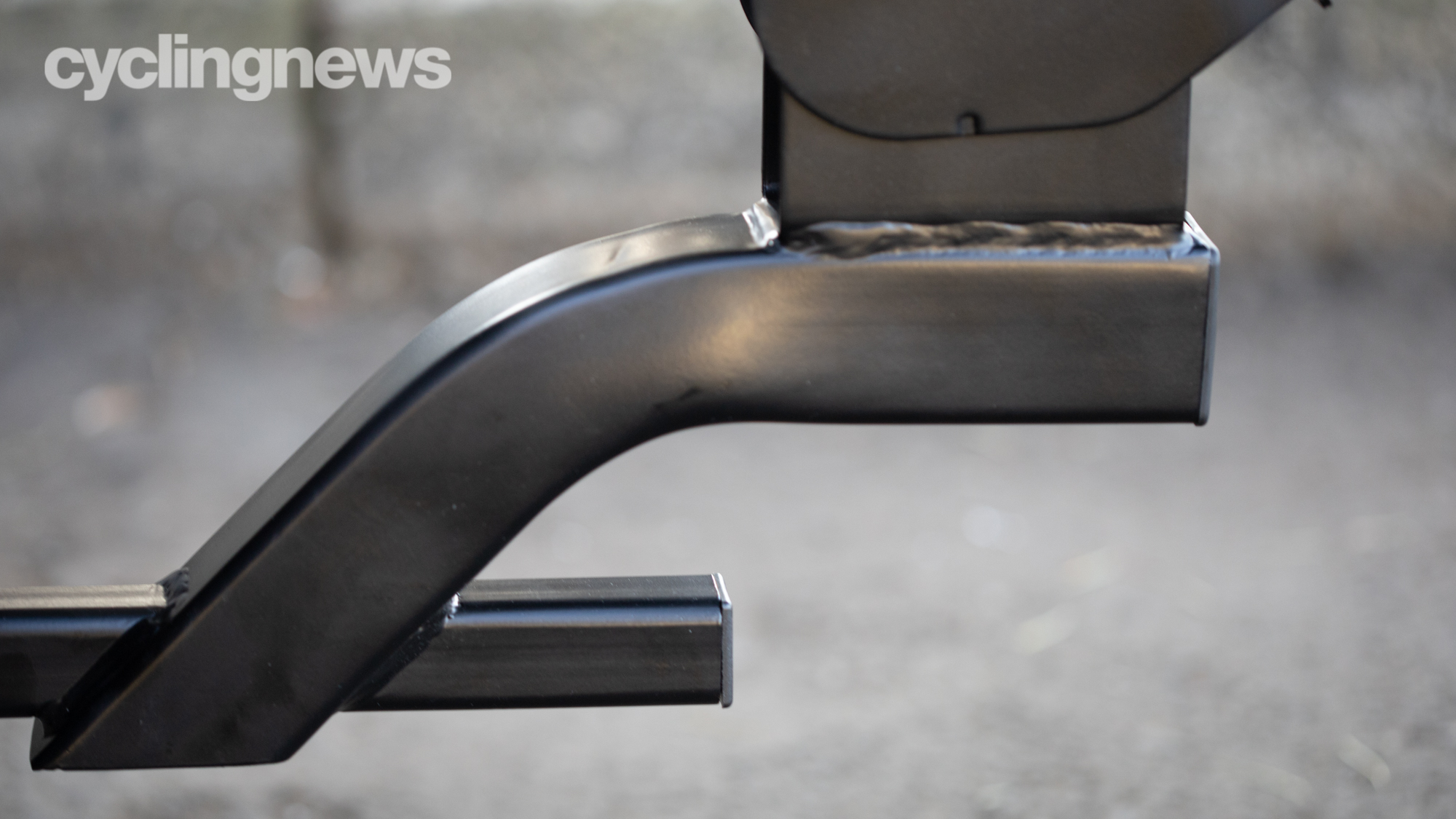
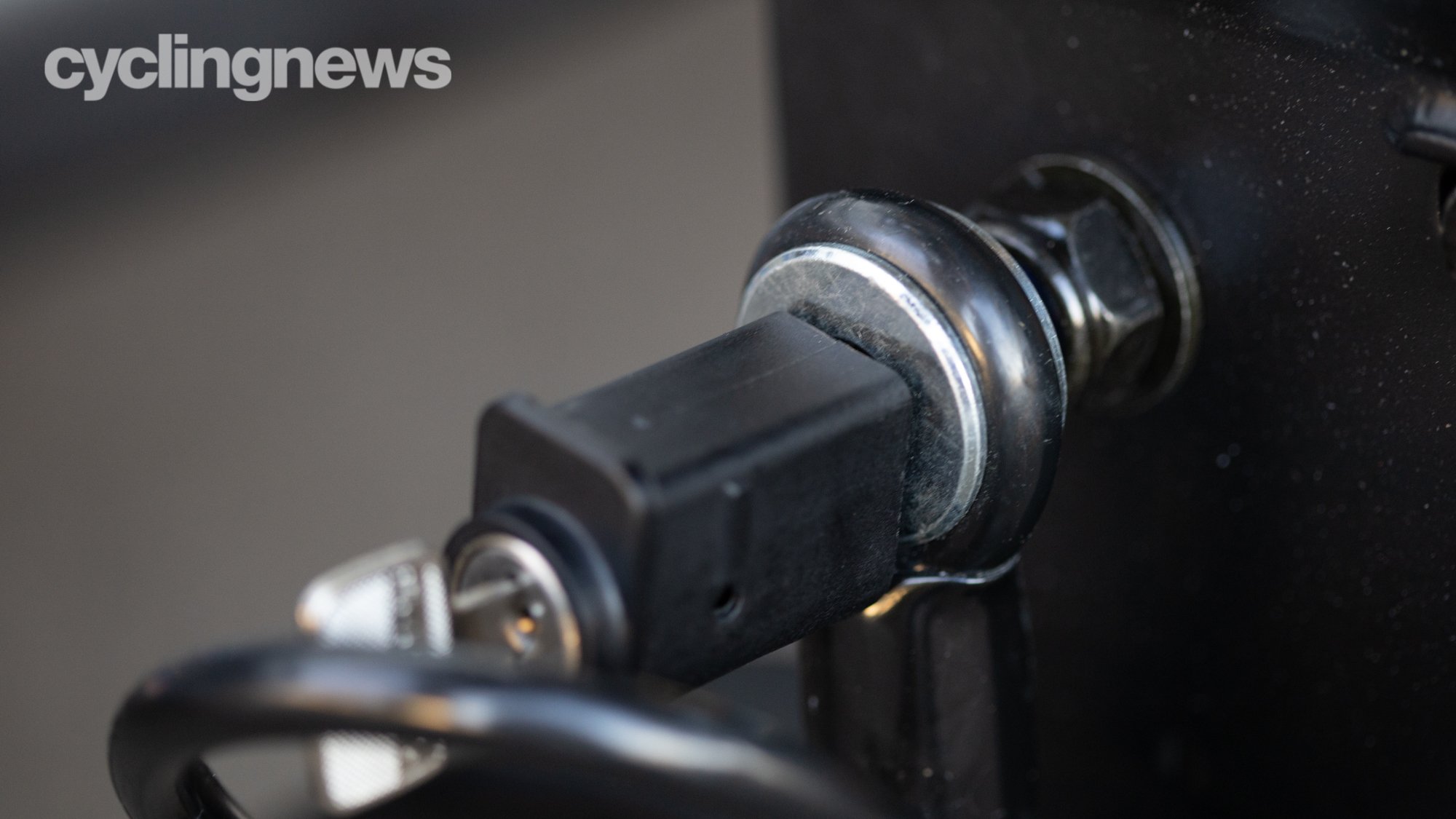
If you've only purchased the RockyMounts MonoRail Solo then that's all the pieces. The two modules connect via four bolts in the base of the MonoRail. The holes have slots for adjustment and when combined the weight is 25 lbs/11.3 kg. Storing or moving is for many people a one-handed affair. It's small enough to hold it to the side while grabbing a door and it's not a challenge to slot into the hitch receiver.
If you've also got the MonoRail Add-On you'll have another box with a second complete MonoRail module. The wheel cups install in the same way and there's another spine to bolt everything together. To add the extension to the Solo, pop the plastic cap at the back of the Solo spine. Slot the add-on spine in and install a bolt on either side. That's it, you are all set to carry two bikes.
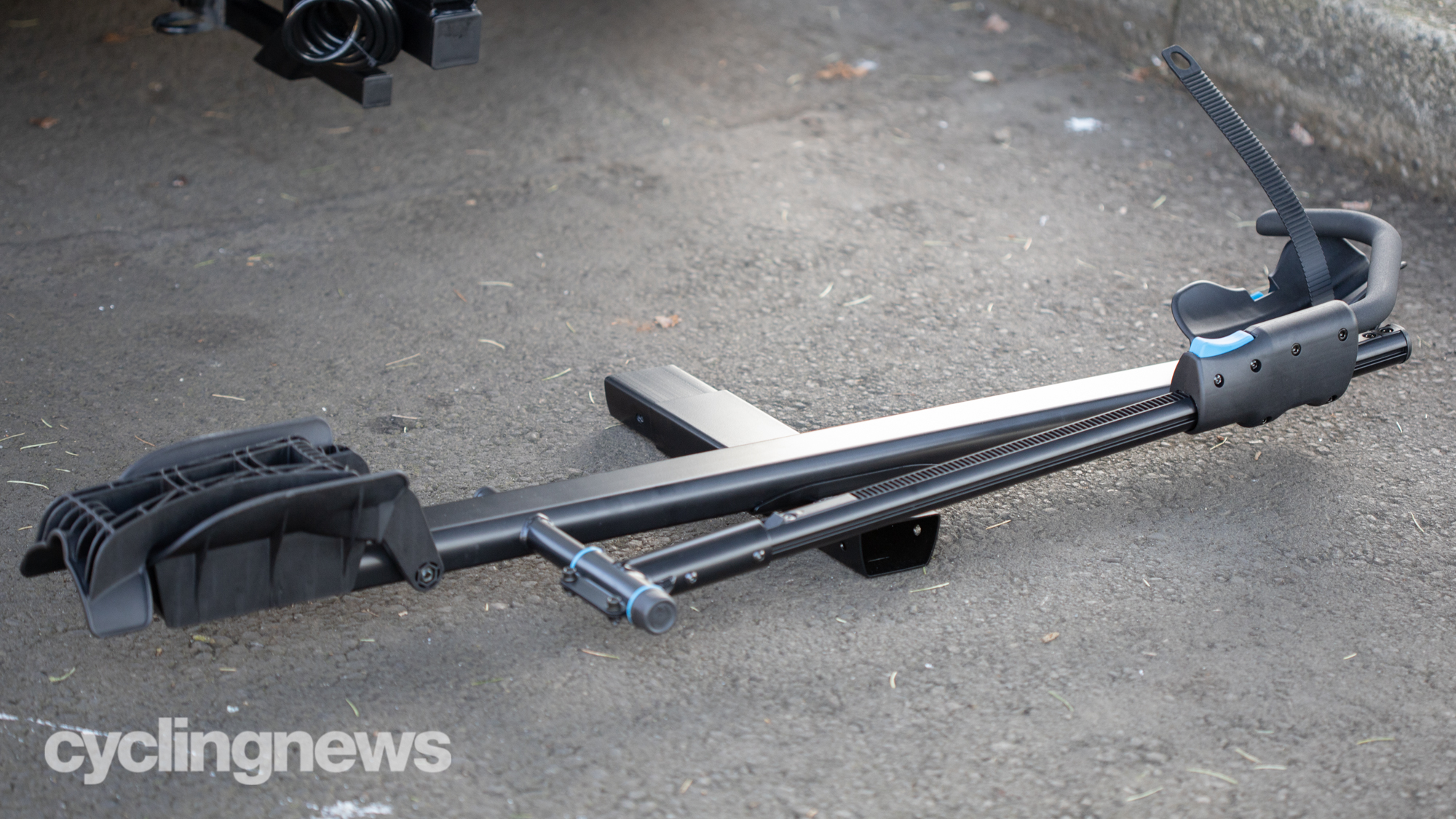
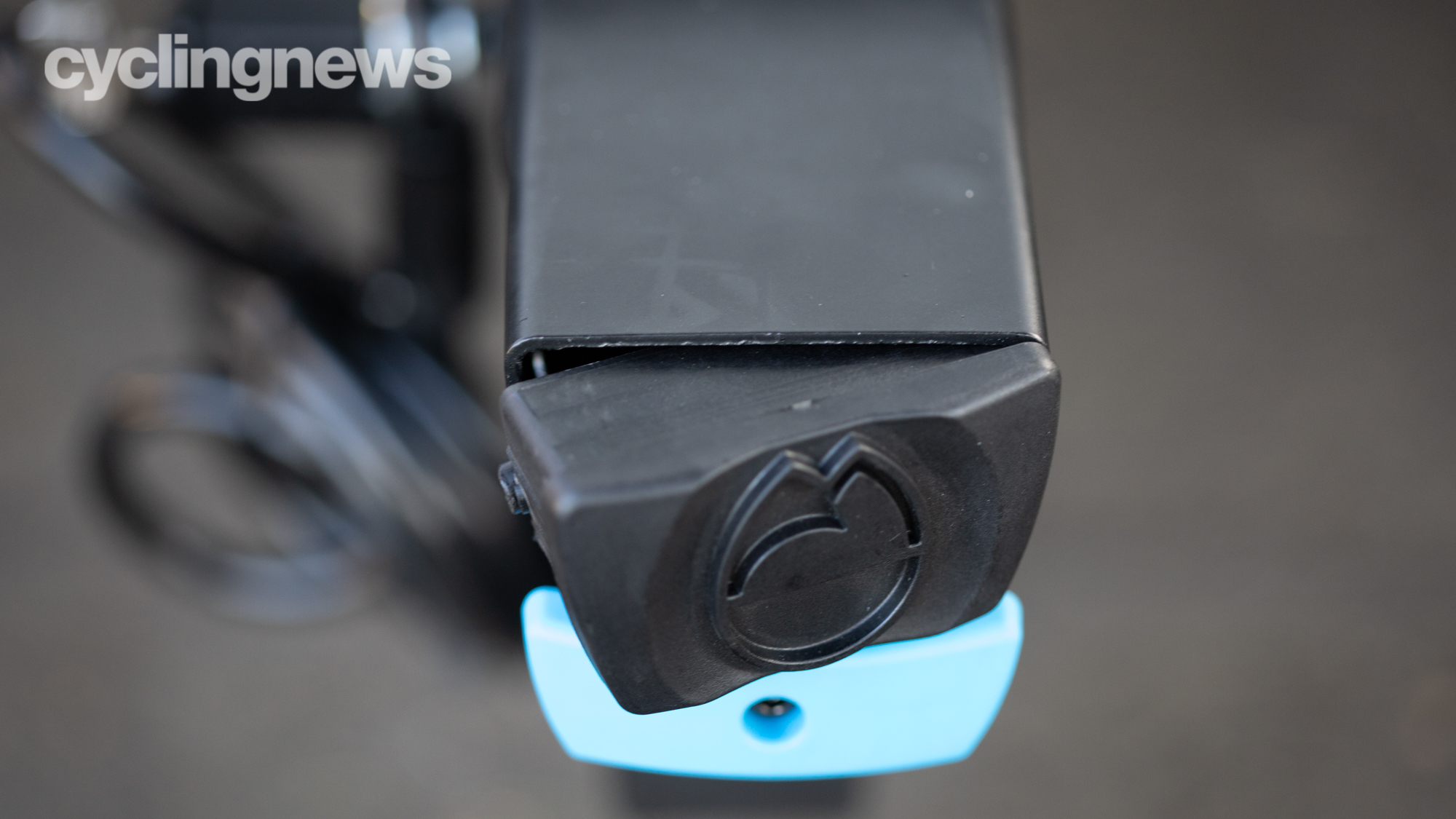
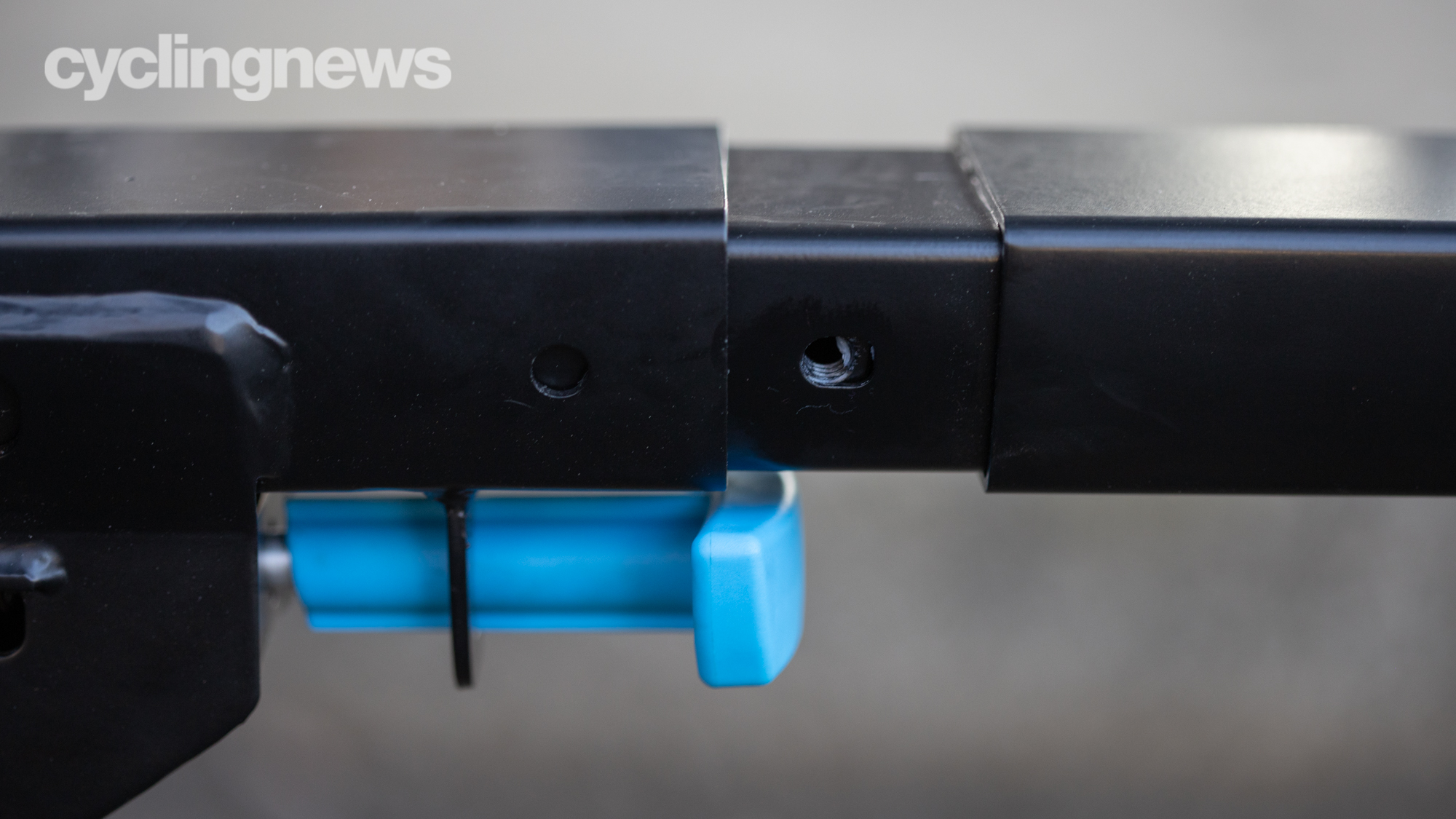
Performance
Tray-style hitch-mount bike racks such as the Rockymounts MonoRail all kind of work the same. Place the bike wheels into the wheel trays, then bring an arm up and push it against the tyre just in front of the fork. The wheel retainer uses a ratcheting system that moves in one direction and needs a button press to move back in the opposite way. At the rear, there's a strap to hold the back wheel in place.
Where there can be deviation is in the details. All the metal pieces on the Rockymounts rack feel high quality but the plastics are less premium - particularly the moving pieces. The mechanism for adjusting the height of the wheel-retainment arm has some play in it and the actual arm moves around a little. Moving the arm into place takes a fair bit of force. None of it affects bike retention but it also doesn't feel super high quality.
Like other racks, there is some form of frame contact, if you consider the fork part of the frame. While it's the tyre that gets held by the front arm, that arm has to sit right against the fork to properly do the job. That's all expected but the Rockymounts arm lacks what you might think of as padding. It's coated with 3mm thick vc-91 durometer vinyl dip. Rockymounts assured me that it was all very intentional and there was no reason to worry but I had my doubts. I felt the need to add a rag against the paint just in case it rubs and scuffs the fork's paint. In a follow up Rockymounts again assured me that they'd never seen it damage the paint but that if I was worried helicopter tape on the fork is a better option as a rag could hinder the solid connection the rack requires for a secure hold.
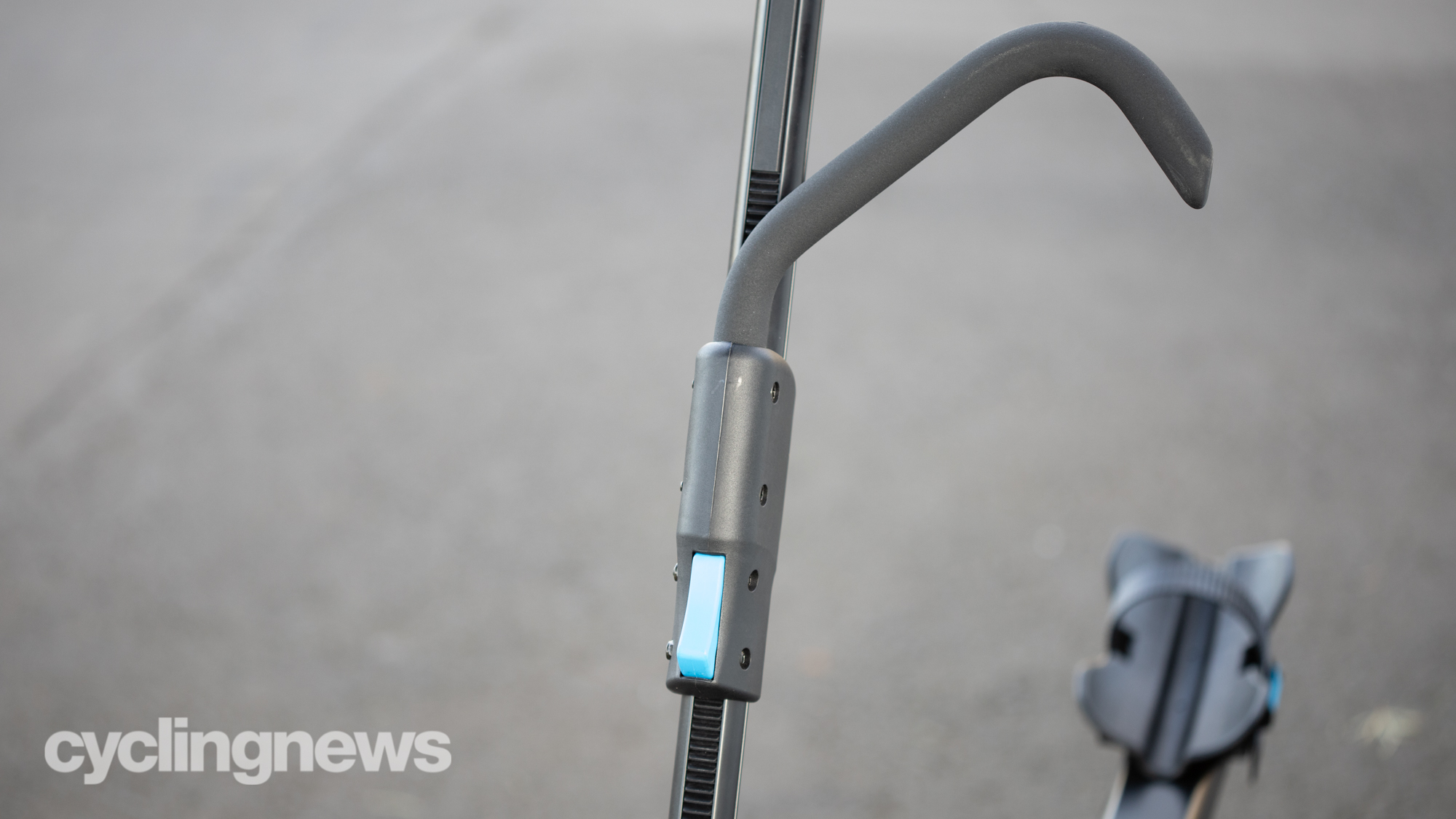
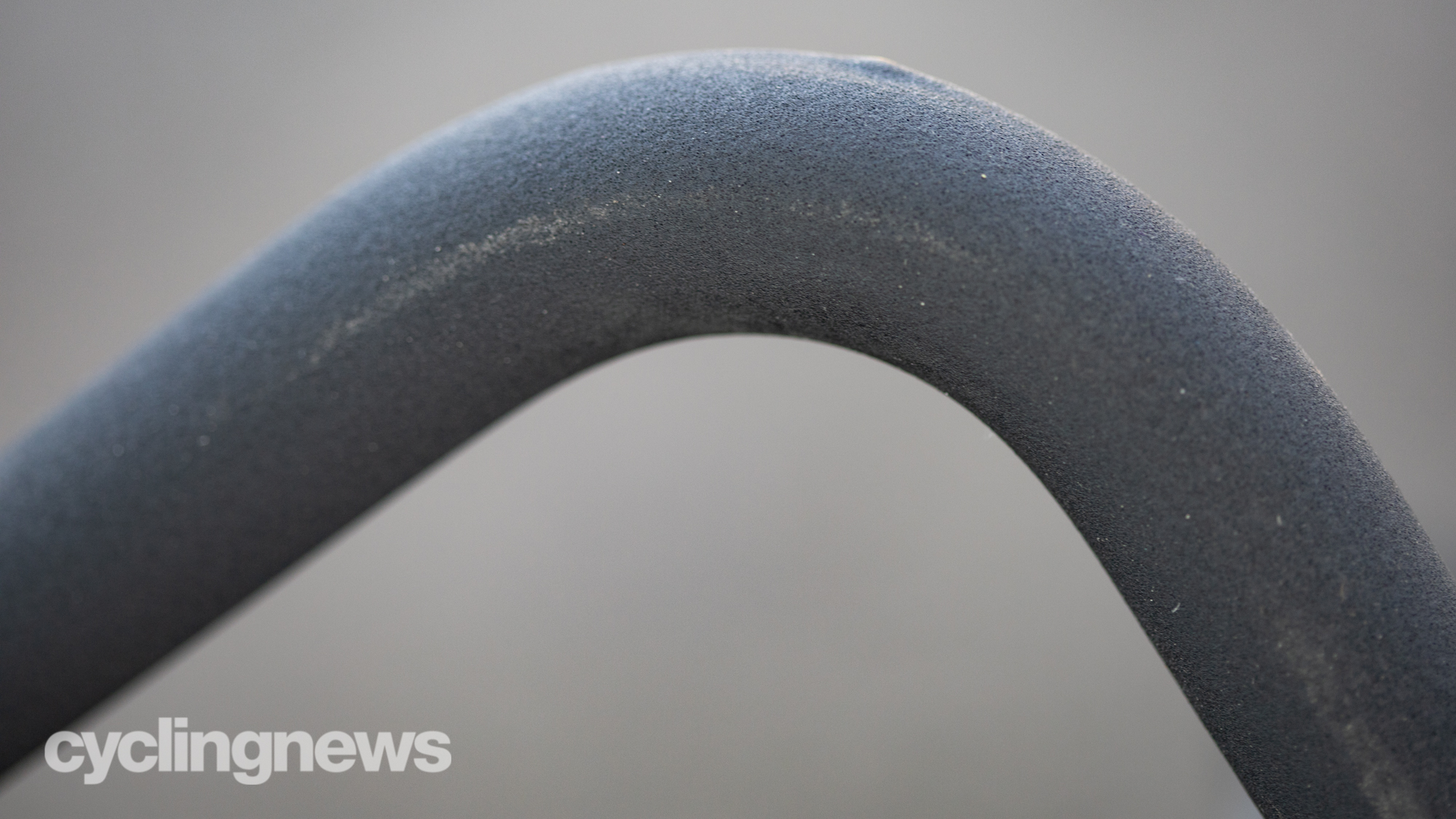
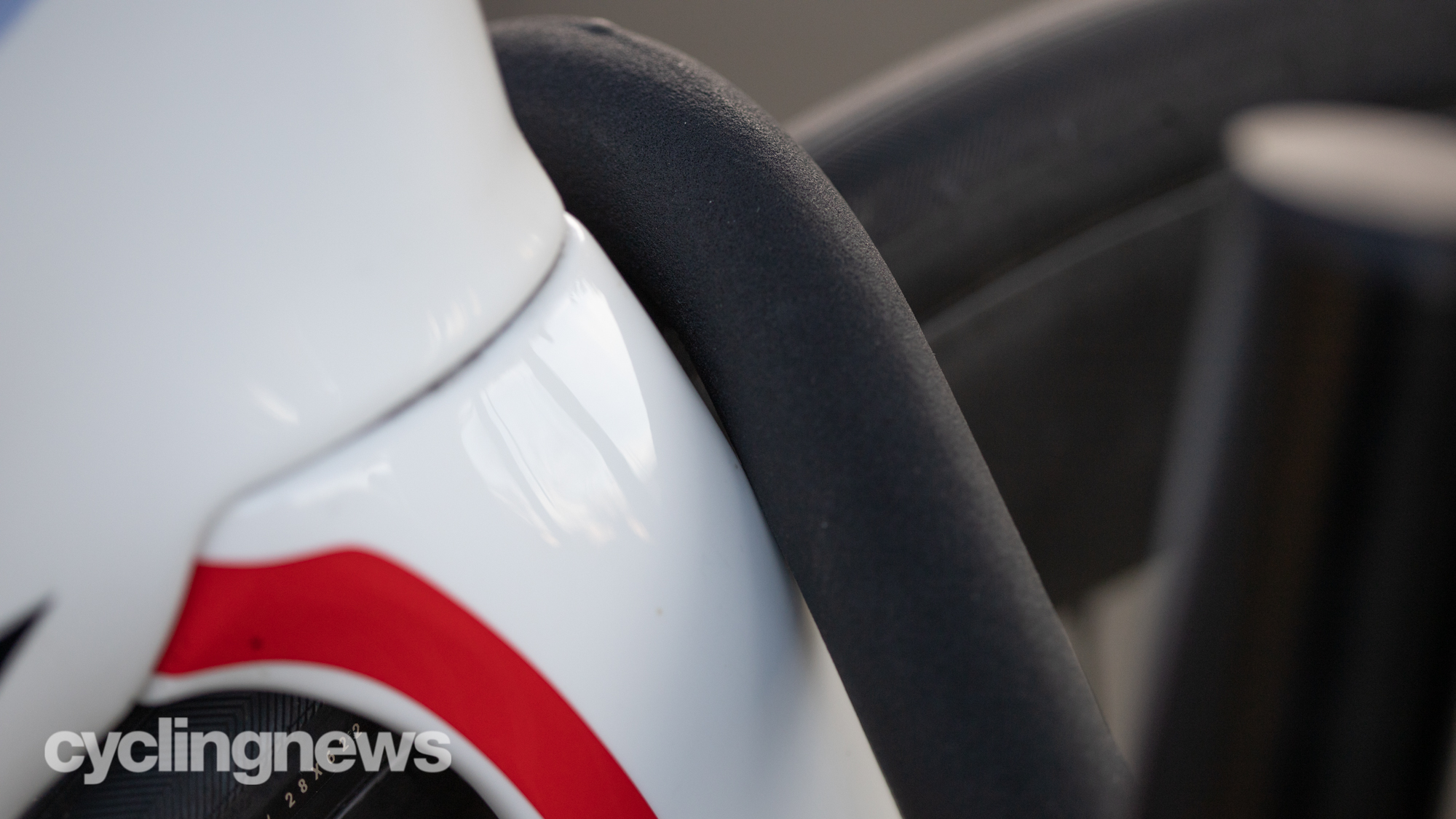
When it's time to install the rack on the car, it's best to get a ratchet of your own. Rockymounts provides a wrench but often the hole for the hitch pin isn't lined up exactly. As you bolt in the pin, things line up but it takes some strength, and you'll need to make sure you tighten the pin down hard otherwise the rack will sway while driving. You could do it with the included wrench but it will take extra effort. You might actually want to include the ratchet in a kit that you keep with the rack (including the appropriate hex wrenches for adjusting the trays or adding the extension), so there's no hiccups when it comes time to install or remove. There's no slick storage so make sure you have what you might need.
Once you've got a bike on the rack, there's no need to complain. The Rockymounts Solo does a great job of holding your bike safely. I used it with drop-bar road bikes and gravel bikes and had no issues with rubbing anything feeling loose or insecure. As I mentioned, it's my preference to pad the wheel retainer where it comes into contact with the fork but nothing is going to move.
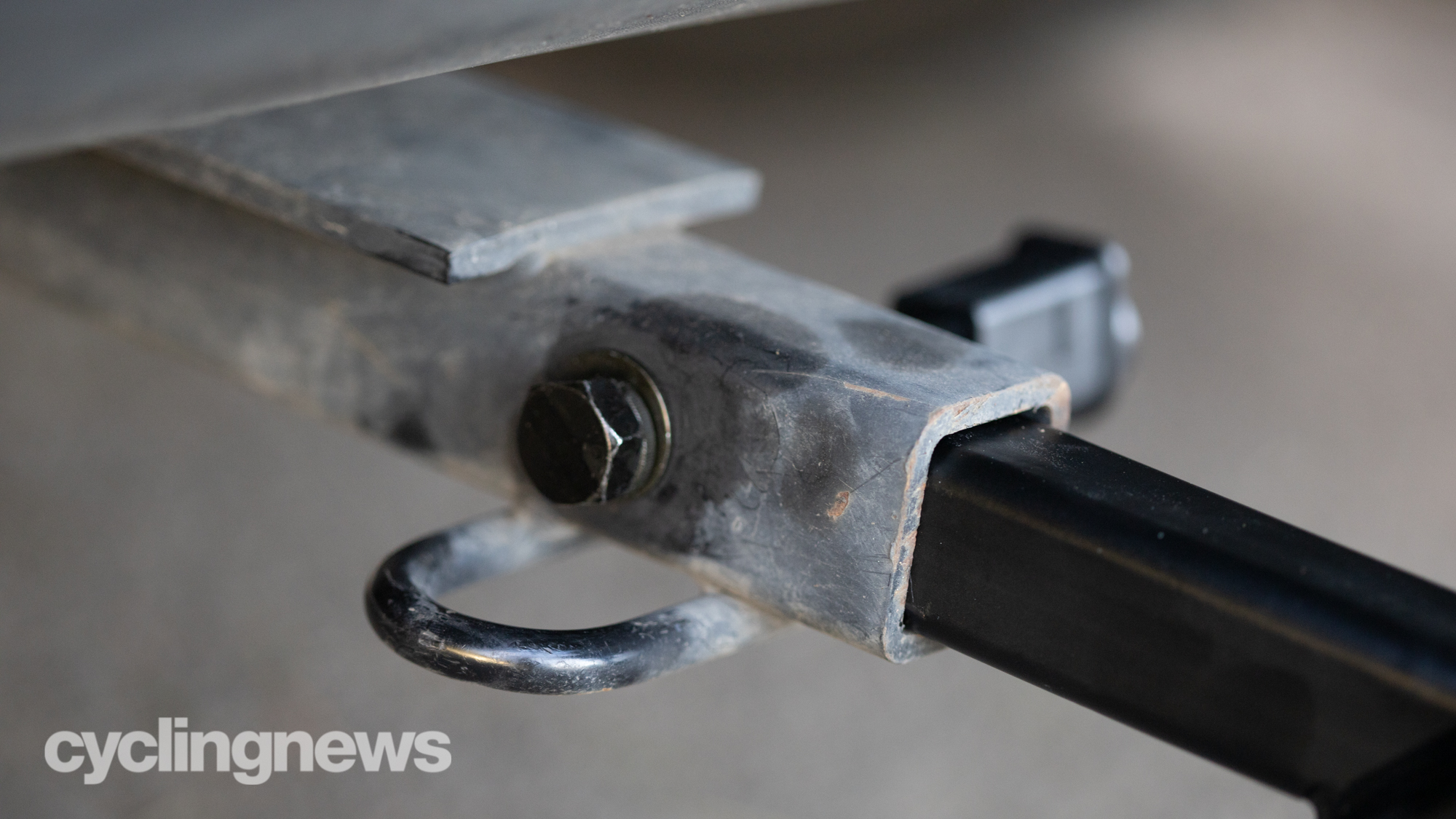
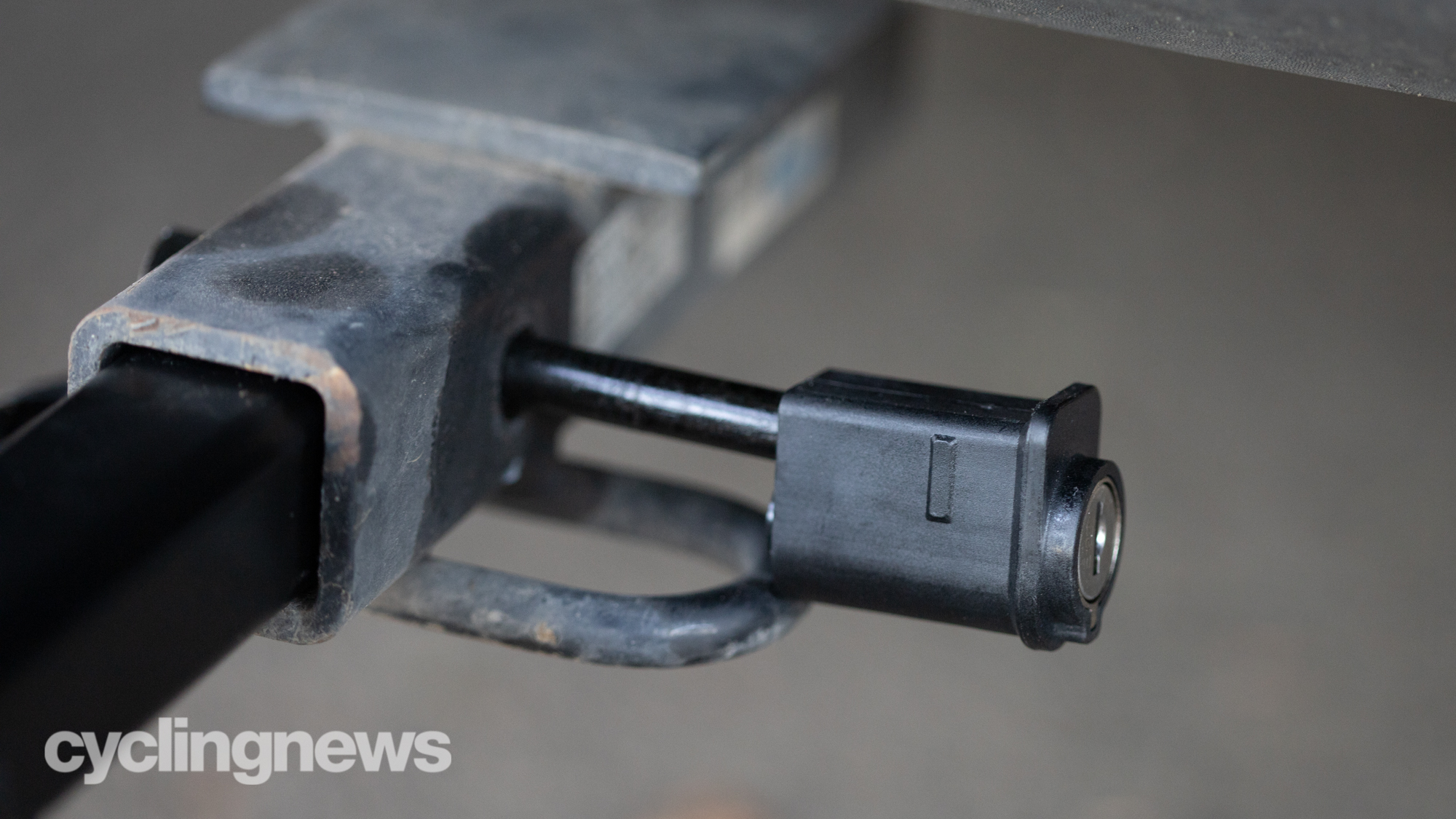
Verdict
The Rockymounts Solo isn't as premium as the Kuat NV2.0 we tested recently. This is a bare-bones rack that is relatively inexpensive and exceptionally easy to move and store. It's also priced at a level that makes sense for what you get.
Your bike is going to be safe on the Rockymounts Solo but there's not an abundance of premium features. It bolts to the car (with tools required) and does what it needs to do. All things considered, this is a great rack. That said, if you are looking to make a big investment in the kind of rack with every feature, and the weight that comes with them, then there are other options.
Tech Specs: Rockymounts MonoRail Solo hitch bike rack
- Price: $349.95
- Carry capacity: Carries 1 bike, up to 60 lbs. Expandable to 2 bikes up to 45 lbs per tray, with Add-On
- Hitch sizes available: 1.25in (Fits 2-inch with Adapter)
- Rack weight: 25 lbs, MonoRail Add-On: 19 lbs
- Max wheelbase: 50 inches
- Max tyre width: Carries road tires up to 5.0-inch fat bike tires, and diameters from 20- to 29-inch
- Compatible wheelbases: 36- to 50-inch
- Accessories: Includes locking hitch bolt, cable lock, and standard lock pods, keyed alike
Josh hails from the Pacific Northwest of the United States but would prefer riding through the desert than the rain. He will happily talk for hours about the minutiae of cycling tech but also has an understanding that most people just want things to work. He is a road cyclist at heart and doesn't care much if those roads are paved, dirt, or digital. Although he rarely races, if you ask him to ride from sunrise to sunset the answer will be yes. Height: 5'9" Weight: 140 lb. Rides: Salsa Warbird, Cannondale CAAD9, Enve Melee, Look 795 Blade RS, Priority Continuum Onyx
